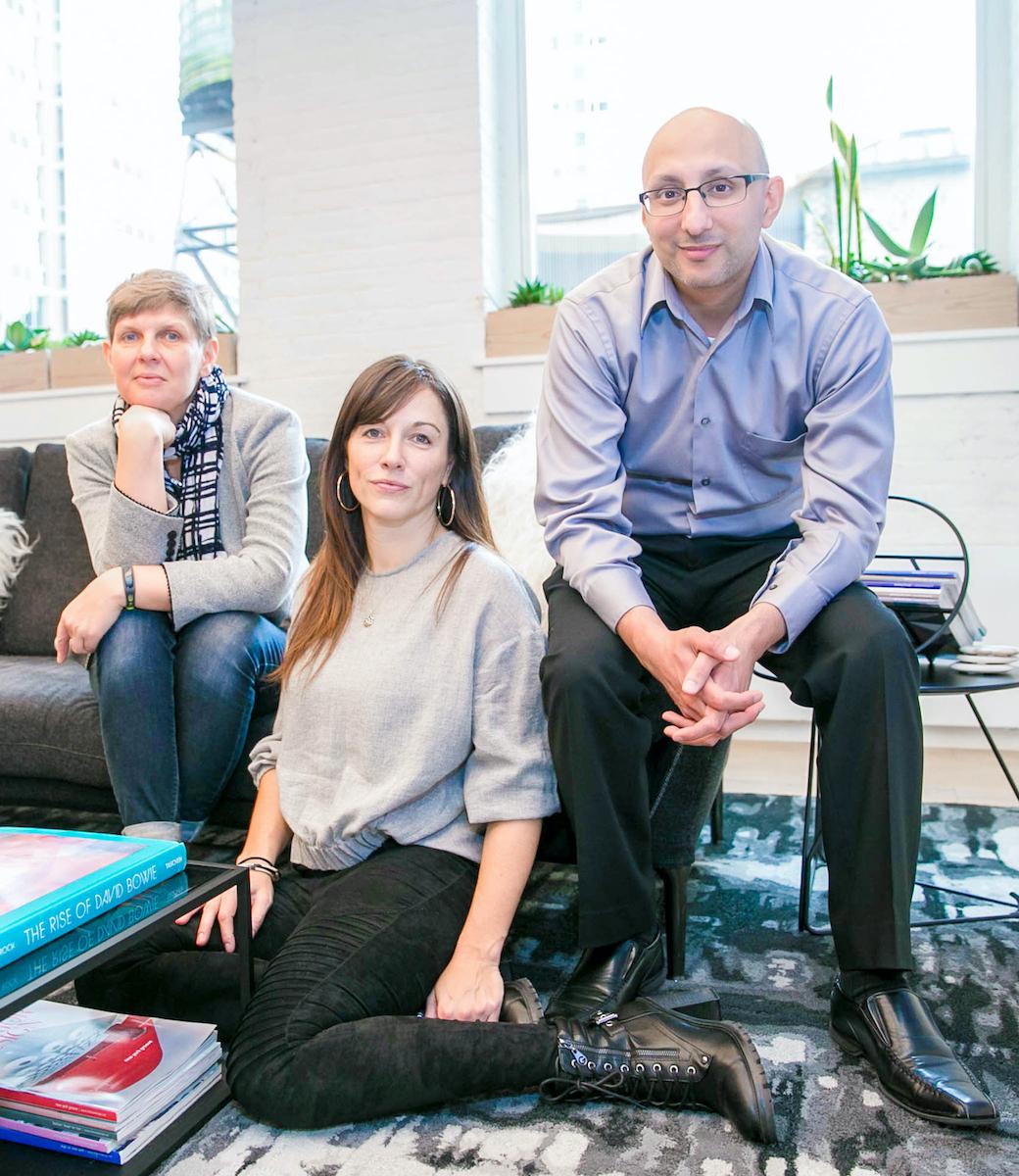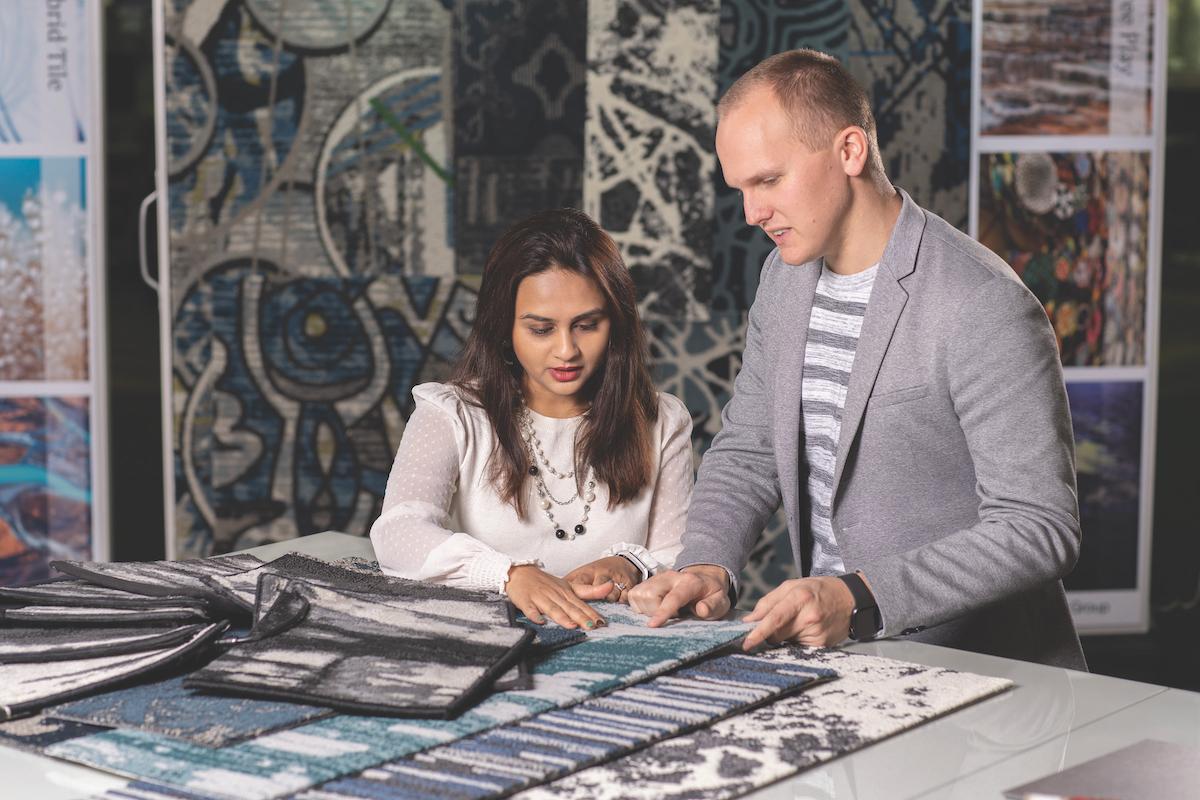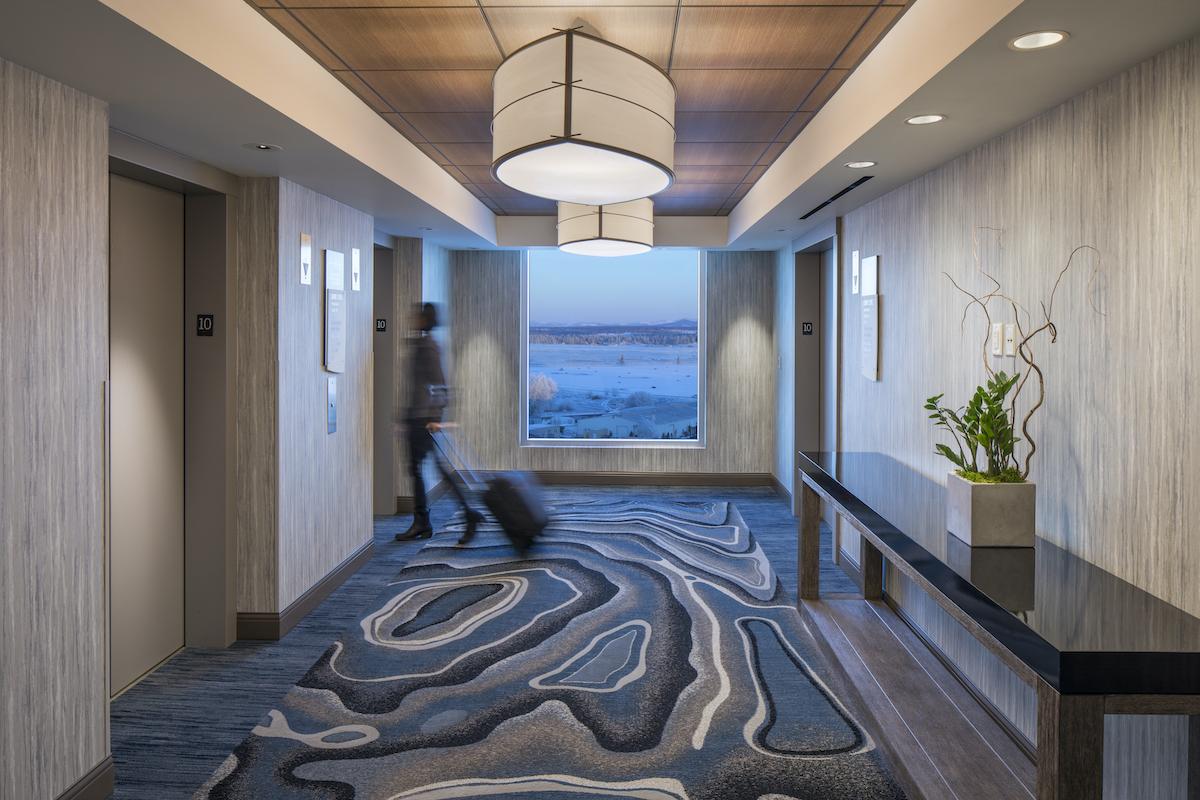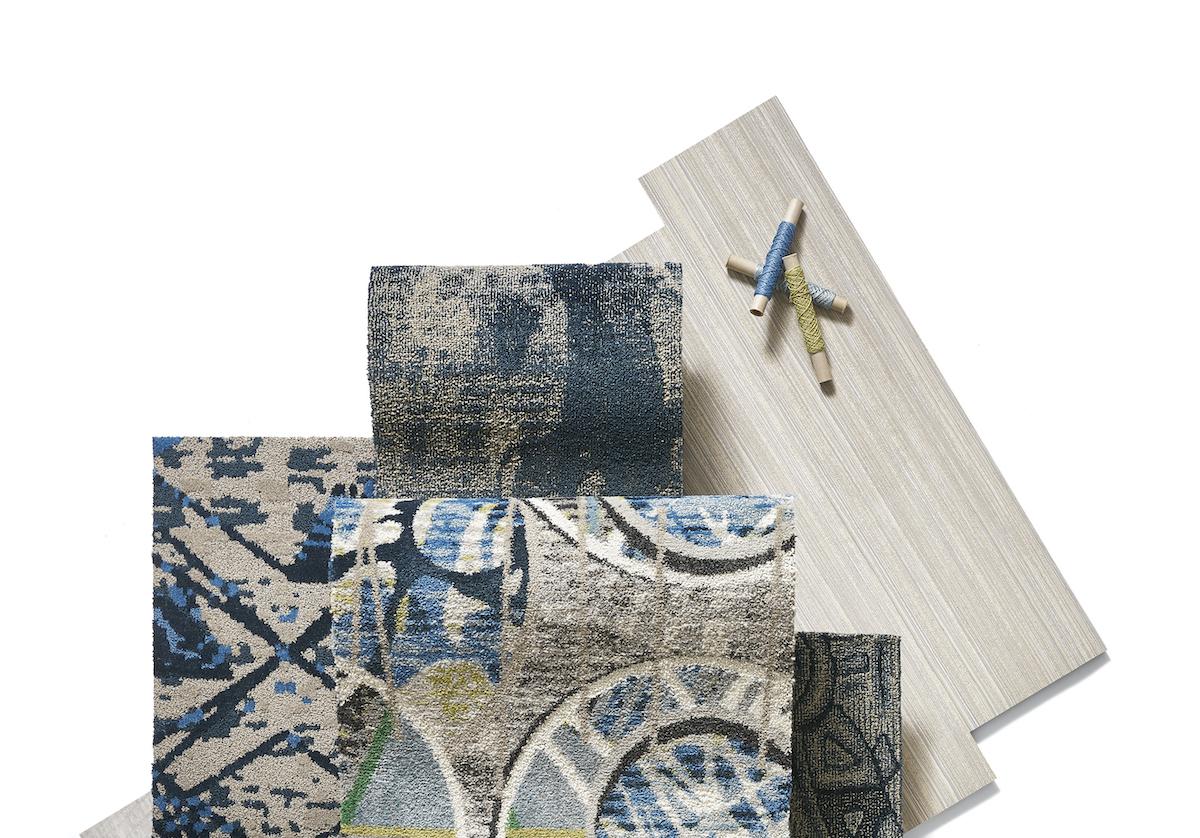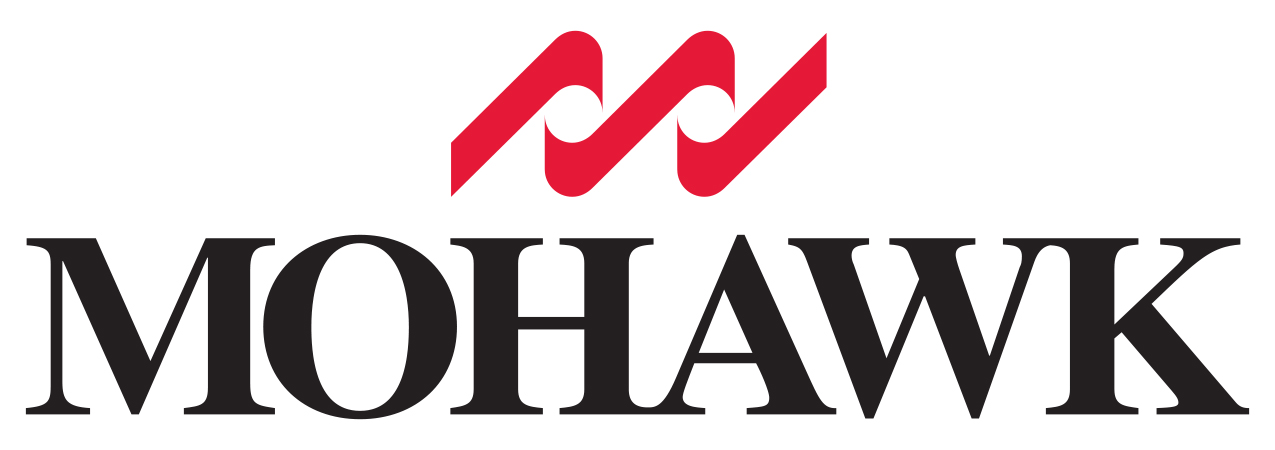Taking the Floor
Durkan’s approach to design and technology continues to raise the bar
Originally published in NEWH Magazine
By Alia Akkam
Photography by Eric Laignel, Lara Swimmer Photography, Sppider, and courtesy of Durkan
In the 1970s, Tom Durkan, a New York-based carpet-industry veteran, set his sights on the hospitality market, building a niche around high-quality manufactured printed carpet as an alternative to then-dominant expensive imports. By the late 1990s, flooring behemoth Mohawk Group bought the company, and Durkan’s footprint expanded—its products now gracing hotel lobbies, corridors, guestrooms, and ballrooms, as well as theaters, casinos, convention centers, and assisted living facilities.
The ascendance of hard surfaces is undoubtedly one of the biggest shifts in flooring since then, and although it’s a category that offers fewer opportunities for customization, Durkan thrives on mixing and matching different platforms. “Whatever it is that clients have in their imagination, we bring to life. Our two key words are leadership and innovation,” says David Duncan, Durkan’s senior vice president of sales. “This is a complex business and the more we can do to innovate and make things faster for our clients—starting with good design—the better.”
Like numerous aspects of hospitality, the pivotal Millennial segment has impacted Durkan developments, with creative design director Elizabeth Bonner noting that the generation has “changed the way we look at things. We have to up the game and offer them something that piques their interest. Working with interior designers we’ve opened ourselves up to new technologies.”
Carpet tile, for example, resonates with Millennials because it’s a more sustainable option, garnering far less waste than traditional by-the-yard wall-to-wall carpeting. “There is an ease of installation with carpet tile and you don’t need more product than the space you are covering,” Bonner adds.
Mohawk is the flooring industry’s leading recycler, and Durkan follows suit, embracing a green philosophy where products “leave a greater handprint than footprint. We have one single facility in Glasgow, Virginia, that is the first Living Site from a product manufacturer in the U.S.,” says Duncan. All of Durkan and Mohawk Group’s carpet tile styles manufactured there on EcoFlex NXT, EcoFlex NXT AIR, or EcoFlex Matrix backings have met the stringent requirements for the ILFI’s Living Product Challenge Petal Certification.
This eco-friendly mindset extends Durkan’s forward-thinking approach to creation. The brand is known for bold offerings like PDI carpet tile, using Precision Dye Injection technology to yield high-resolution patterns that are customizable for up to 12 colors. There is also the Sakiori collection, a woven enhanced resilient tile that combines the durability of hard surfaces with softness, as well as Curated Craft, a broadloom collection of five different styles that marks Durkan’s first foray into wool.
One significant turning point for Durkan was the launch of multi-level textured Definity Precision Sculpturing Broadloom Technology using Colorstrand Solution-Dyed Nylon. “It goes head to head with Axminster,” explains Duncan of Definity’s complex cut-and-loop constructions resembling a hand-tufted aesthetic. “It’s perfect for large ballrooms and prefunction spaces when you want a 72-foot repeat.”
Definity has spawned new collections like La Valeureuse (also available in PDI and Computer Yarn Placement) with longtime collaborator Virginia Langley. The textile designer’s abstract interpretations of emotions and moods are delineated in her melange of textural brush strokes, curves, and swirls.
Free Play (also available in PDI, textured pattern perfect broadloom and carpet tile, and tufted broadloom) is inspired by a parlor game of yore played by the Surrealists. To transcend their daily routines, they embraced exquisite corpse technique, drawing an image on a piece of paper, concealing it, and then passing it on to someone else to elicit imaginative, surprising collaborative illustrations. Durkan designers took the same experimental route for Free Play, and the “different layers were merged in a finished collection that showcases the whole team, feeds their creative side, and breaks design rules,” says Bonner.
Durkan works with a range of hospitality partners, including the 1 Hotel in Brooklyn, New York, and Northern Quest Resort & Casino in Spokane, Washington. One particularly striking installation is on display at the Shed, the cultural center inside the Bloomberg Building at New York’s Hudson Yards, designed by Diller Scofidio + Renfro and Rockwell Group. For the Tisch Skylights and Lab, the rehearsal and event space on top, Durkan customized a solid white-oak hardwood floor flaunting geometric diamond patterns that is amplified by the natural light streaming in.

